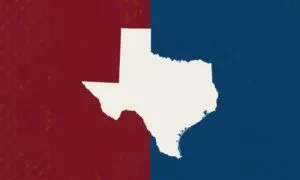Teaching students about free speech through Supreme Court rulings can be eye-opening.
We’re talking about the kind of lesson that doesn’t just rattle off rules but instead invites students to step into the courtroom, so to speak, and see where their rights and responsibilities begin and end.
Tinker, Fraser, and Hazelwood — these cases show students how free speech has limits, especially in schools, where education and order sometimes have to come first.
Let’s break down these landmark cases, see how they apply to real-life situations, and explore some engaging ways to teach them.
Table of Contents
ToggleTinker v. Des Moines (1969) – Defining Students’ Right to Protest
The story starts with Tinker v. Des Moines. Students wore black armbands to school in protest of the Vietnam War, and the school wasn’t happy.
So, the case went all the way to the Supreme Court. The result? The Court ruled that students don’t “shed their constitutional rights to freedom of speech or expression at the schoolhouse gate.” Pretty powerful, right?
This case introduced what we now call the “Tinker Test” — a standard saying that schools can only limit student speech if it significantly disrupts school activities or infringes on others’ rights.
If students need additional resources to understand the implications of landmark cases or to craft well-rounded arguments, they can visit WritePaperForMe to get help with research and writing projects tailored to their educational needs.
- Role-Playing: Have students imagine they’re the Tinkers, the school, and the Court. Let them debate if and when peaceful protests should be allowed in schools.
- Case Analysis: Present hypothetical situations: Could they wear symbols or make statements about modern issues? They’ll have to think critically about the impact and limitations of free speech in their world.
Bethel School District v. Fraser (1986) – Limits on Lewd or Inappropriate Speech
Fast forward to 1986 with the Fraser case, where a student got in trouble for delivering a speech full of innuendo at a school assembly.
Here, the Court sided with the school, emphasizing that speech deemed inappropriate or disruptive to the school’s mission and morals doesn’t get the same level of protection.
The ruling draws attention to the fact that speech rights can be more limited within school grounds when it comes to vulgar or indecent language.
- Debate “Appropriate Speech”: Ask students to consider what constitutes “appropriate” language at school versus elsewhere. How do cultural norms affect this?
- Mock Debates: Set up arguments for and against the school’s decision in Fraser’s case, encouraging students to think about why certain settings (like a school assembly) may impose stricter standards.
The Fraser case can spark discussions about where to draw the line between humor, expression, and offense in a school setting, building a framework for understanding school policies on speech. However you spin it, there needs to be a certain limit.
Hazelwood School District v. Kuhlmeier (1988) – Censorship in School-Sponsored Publications
The third key case, Hazelwood v. Kuhlmeier, dealt with censorship in student-run publications.
When students wrote articles about sensitive topics like teen pregnancy and divorce, the school principal removed them.
The Court decided that school-sponsored activities, like newspapers, could be censored if the content went against the school’s educational goals or public image.
- Role-Playing and Editorial Decisions: Divide the class into groups where some act as student journalists, others as school administrators. Let them work through different scenarios, making decisions about what gets published and why.
- Discussion on School Image: Have students think about the balance between expression and school reputation. Should all speech in school-supported platforms be free? Or do schools have a duty to maintain a certain image?
Through Hazelwood, students learn that when they’re speaking “on behalf” of the school, certain limits come into play, and they are very important.
Teaching Strategies for Exploring Student Free Speech
Each case sheds light on unique aspects of free speech in schools, and combining them in a single lesson plan offers a nuanced view of student rights. Let’s look at some strategies that help make the lessons stick.
1. The Jigsaw Method

Divide the class into groups, assigning each to research and present one of the three cases.
Once they’ve got their part down, they come together, teaching each other and discussing different perspectives on student speech.
2. Case Analysis and Role-Playing
“Anatomy of a case” involves digging into each side’s arguments and understanding the decision’s implications.
Adding role-playing — where students argue both for and against free speech restrictions — makes the process active and fun, giving them hands-on experience in judicial reasoning.
3. Debate and Open Discussion

Debating free speech issues allows students to weigh different views, all while respecting other perspectives.
Setting ground rules for respect and open-mindedness keeps things on track and creates a safe space for everyone to share their thoughts, even on tough topics.
4. Hypothetical Scenarios for Modern Times
What if a student made a statement on social media? What if they wore a shirt promoting a controversial message?
Present modern scenarios and let students decide how they’d apply the principles of Tinker, Fraser, and Hazelwood. This exercise gets them thinking about how free speech evolves with technology and new social dynamics.
5. Writing Reflections and Position Statements
After exploring each case, students can write personal reflections on how each decision might relate to their lives or their school policies.
This kind of assignment helps students tie abstract legal principles to real-world situations, making the impact of Supreme Court rulings feel personal.
Why Teaching Free Speech Matters
Teaching free speech through cases like Tinker, Fraser, and Hazelwood goes beyond history or law. It equips students with an understanding of their rights and responsibilities in a democratic society.
They learn that free speech isn’t just about saying what they want but also about knowing when certain restrictions are there for a reason, especially within schools. Through these lessons, they gain skills in critical thinking, civil discourse, and respect for diverse opinions — qualities that go a long way in life.
Plus, by understanding the balance between free speech and the need for respectful boundaries, students can become more thoughtful citizens.
So, while Supreme Court rulings might seem distant, they’re closer than students think, shaping their everyday rights and responsibilities in the school setting and beyond.
Related Posts:
- Safest Countries in the World in 2025 - GPI…
- 26 Most Dangerous Cities in US - Updated Statistics for 2025
- The Hidden Boundaries of Free Speech in Modern Democracies
- Capital Cities in Europe: Top Destinations For You…
- America's Murder Capitals: A 2025 Ranking of the…
- Civil Liberties vs. Civil Rights: A Comparative Analysis








